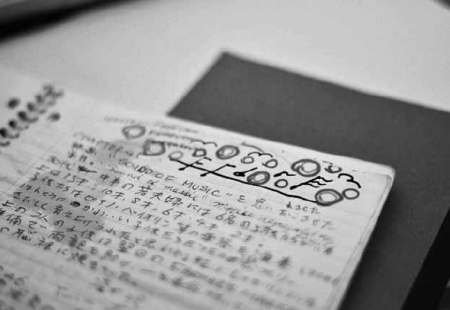Tractor Trails by Danielle Thien. An excerpt. Published in Ricepaper 18.1, Summer 2013.
In the Arctic Circle, at a latitude of sixty-six degrees and thirty-three minutes, traces of human existence are scant. Perhaps once every two hours a car may pass by, its tires crunching over the gravel road. In the summertime, the landscape is overrun by meadows of wild flowers that grow, undaunted by the lash of winds. Among these, there is a field of pink blossoms. From a distance, all you can see is a blush of petals and the green of grass, leaves, and stems. If you take a closer look though, you may detect several bright green spheres peeking through the bloom of pink. There are no farms in sight, no houses. And yet here, in this field of flowers, a tomato plant grows.
There are true stories, and then there are real stories. This is what Thomas Kamiya tells me as we sit in his living room, sipping at cups of green tea. A man of slight built, his hair is black as ink except for the rare grey strand in his sideburns. The account of man walking on the moon, Kamiya insists, is a true story, but it isn’t real. “I know it is true because I saw the picture, I saw it on TV. But in forty years, no one else has gone to the moon. And so I ask, how can it be real?”
Kamiya has invited me to his home today not to question the authenticity of human scientific achievements, but to tell his own tale of exploration and discovery. Up until now, I’ve only known this man as the father of my friend. His son and I have shared the same piano teacher for years now, and yet Kamiya and I have never exchanged more than a few meaningless words after concerts. But there is meaning behind the story he is telling me now, the story of a journey that launched him from Vancouver, up through the Fraser Valley and the Yukon, finally reaching the Arctic Circle before he descended via Alberta and returned to British Columbia.
For six months, Kamiya traveled from organic farm to organic farm, learning how to cultivate crops and rear livestock through sustainable methods. It was an unusual expedition, especially since Kamiya was once a young man growing up in Okinawa, Japan, determined to escape the farming life his father had chosen.
And so in order to explain the motivations behind his trip, Kamiya begins with a story—a real story about the decades he spent mending giants of iron and steel, his fingers stained black with grease.
—
For the full story, buy the issue.
